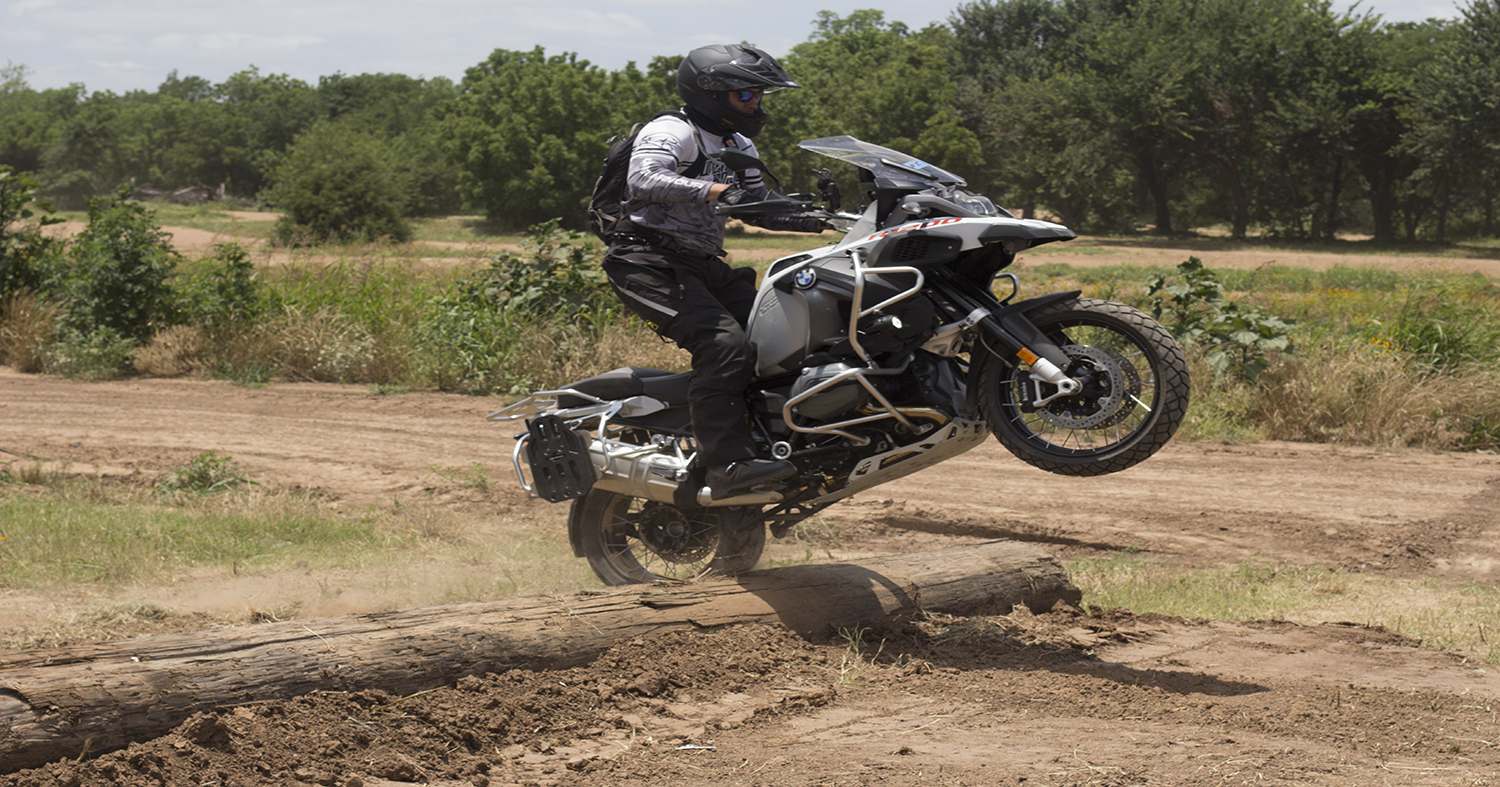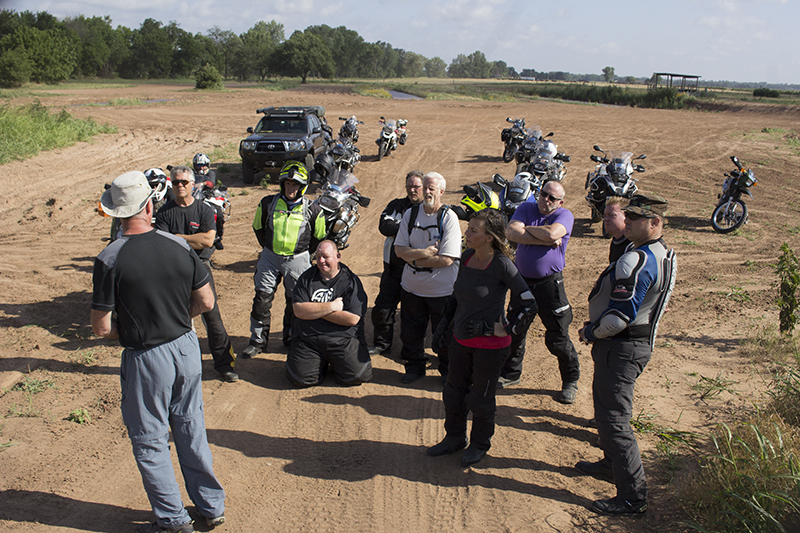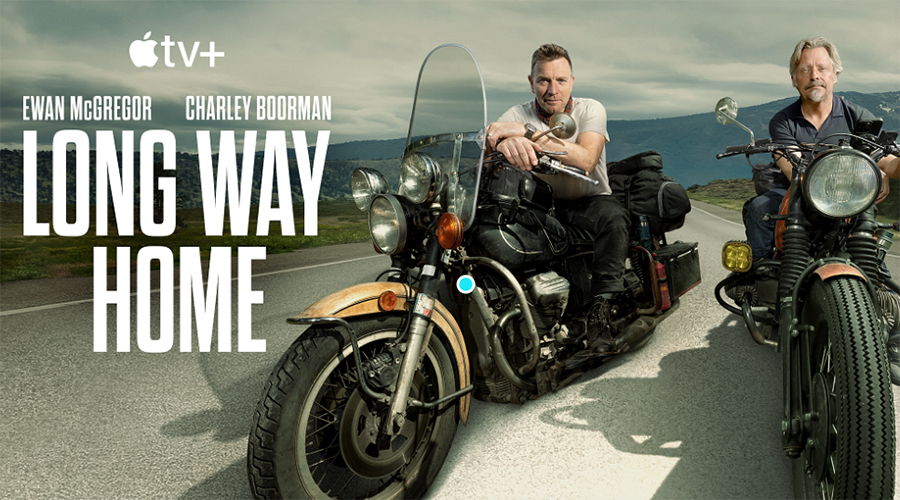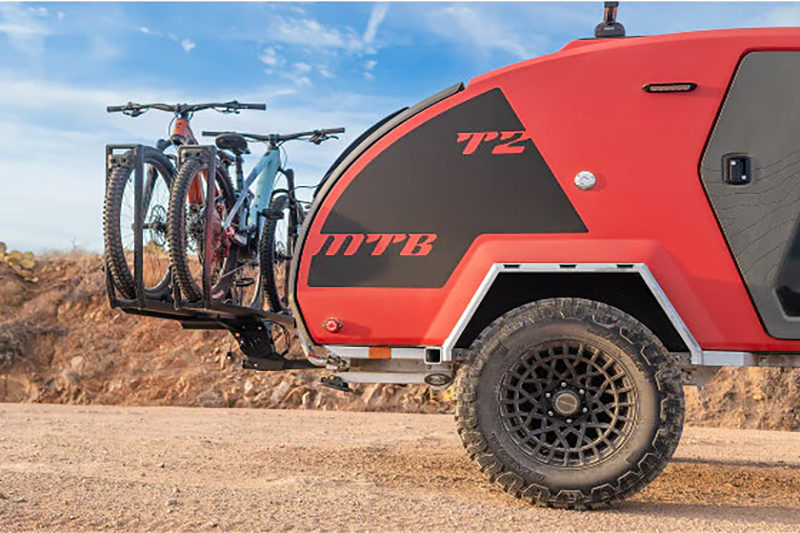ADV Moto Training with DART
“Clutch! Clutch! Clutch! Dump the clutch!”
I’m halfway up the hill when everyone starts yelling at me as my Kawasaki KL250 Sherpa starts rolling backward. I know I’m supposed to let go of the clutch and the throttle, letting the bike stall in gear, but my left hand won’t let go. I have that clutch pulled in like it’s the only thing saving me from a hideous tumble down the dirt hill, even as my rational, non-panicking brain is telling me the opposite.
The coaches at Bill Dragoo’s Adventure Rider Training (DART) run at me full sprint, grabbing my bike just as I finally dump the clutch, but the motorcycle is already falling to its side, bucking me off like an angry pony.
As I leap from the Sherpa, I lose my balance and suddenly I’m somersaulting backward down the steep, dirt hill. In some astonishing act of agility, I flip backward twice and end up on my feet yelling, “I’m good! I’m good!”
I yell that phrase a lot during the DART course, which is designed to teach motorcyclists a set of skills that, when put together, boost confidence in handling a motorcycle over almost any kind of terrain. On the DART course’s “hill fail” exercise, I messed up twice before somewhat mastering the technique of stalling halfway up a hill, turning and backing up the bike in a controlled manner, and safely driving it back down to the base of the incline.
But I did it.
On that first day of Dragoo’s Adventure Rider Training, I had been riding a motorcycle for less than a month. That day was only the fourth time I had ever been on a motorcycle, but I was already learning more about handling my bike in difficult situations than most people do in years.
WHY NOW?
At 40-something years old, I decided I wanted to learn to ride a motorcycle. Specifically, I wanted to learn off-road trail adventure riding, mostly because it just looks like so much fun.
Dragoo Adventure Rider Training
Bill and Susan Dragoo of Norman, Oklahoma, are also friends. Bill is as close to being a motorcycle god as one can be, and he hosts adventure rider training courses all over the world, teaching motorcycle enthusiasts how to control their bikes in some of the most challenging conditions and in countries like Colombia and Africa. Bill was the one who convinced me to try.
As a complete beginner, I was too ignorant to be scared of the idea. In a matter of a few hours, I committed to not only learning how to ride a motorcycle, but also learning how to ride through sand, gravel, dirt roads and through some of the toughest terrain motorcyclists face. And I was going to do it in a month.
LEARNING TO CRAWL
My mother witnessed a motorcycle crash outside of our house when I was a baby, and from that day on, forbade me to even be a passenger on a motorcycle. I was taught that motorcycles were death machines.

Her story and her words of caution kept replaying in my brain as I sat for the very first time on a silver Kawasaki at Brown’s Driving School in Oklahoma City. I had taken the required Motorcycle Safety Foundation (MSF) online course, and now, along with roughly a dozen others, I was ready to learn the actual operation of a motorcycle. Our instructors, Kurt Rice and Johnie Fredman, asked each of us about our level of experience at the beginning of the class. Most of the students had at least months of practice behind them.
“This will be my first time on a motorcycle,” I said, watching every head swivel my way. “I don’t even know how to get on a motorcycle.”
“You’re my favorite kind of student,” said Rice.
Over the course of two days, I learned how to control the clutch/throttle, find my friction zone, how to “spot” and lean in tight curves, how to brake properly, how to maneuver figure-8 turns, and how to avoid obstacles. I was especially proud of myself for not completely losing it when a spider dropped down inside my helmet while I was doing in-and-out weaving maneuvers through cones.
After two eight-hour days of training, I had to pass the skills test to earn my motorcycle endorsement. I messed up when I touched my foot down briefly during the figure-8 U-turns. I had to use my “second chance” during the sudden swerve test. I felt clumsy and shaky and frustrated with myself.
“So… how do you think you did,” Fredman said, his head shaking sadly at me. I felt my gut clench. Two people had already failed, and I didn’t want to be one of them.
“Uh… I thought I did okay,” I mumbled, my eyes doe-wide as I looked at him pleadingly. He shook his head sadly again.
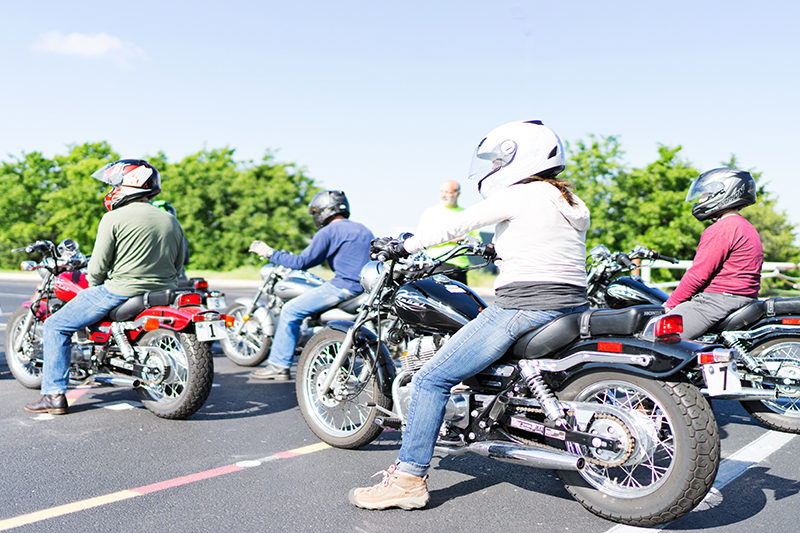
“You passed with a 90,” he finally announced, grinning at my victory relief dance and whoops. By some miracle (and stellar instruction by Brown’s) I not only passed, but was among the highest scores in class.
First step complete. I could legally ride a motorcycle.
ADVENTURE RIDING
The bank along the Canadian River was lush with golden sand deep enough to swallow the back wheels of a motorcycle. As Bill likes to say, the river has “some of the best sand in the world,” and it was the perfect place to teach motorcyclists how to control their bikes while riding through the sly and sinewy terrain.
The Dragoo Adventure Rider Training course was miles different from the basic motorcycle course, focusing more on skill mastery tasks designed to conserve energy during endurance rides. Bill began coaching in 2012 in Bolivia, expanded the training by request to Oklahoma, and now teaches all over the U.S. from Washington to Vermont. He is considered by many to be one of the best adventure rider coaches in the world.
Again, I was the one with the least amount of experience, but by the end of the course, I learned techniques most riders don’t have, thanks to Bill and his assistant coaches.
During the two days of adventure rider training, Bill explained each skill exercise. One of his coaches demonstrated the maneuvers, which ranged from weaving, learning to balance while standing, using body weight to balance, taking tight turns, controlling the bike on hills, and how to recover from stalls. All activities are done while standing on the bike, which Bill said allows for greater control when riding in rough terrain.
Bill’s coaches Josh Jewell and Tobin Vigil have been with him from the start, while Zeke Sikich and Todd Hamm are scouts and coaches in training. Dave Knight of Kansas City also worked with students. One concept Bill taught was called “Bike in Tension” which teaches how one can balance a motorcycle at low speeds without “dabbing” or placing a foot down to save a fall.
We lined up facing one another, and one row acted as the “brake” while the other acted as the “clutch.” It was kind of like the game London Bridge Is Falling Down as we grabbed hands while taking steps back from one another. By leaning into each other, and trusting each other to keep balance, Bill showed us the importance of how brake and clutch work together at staggeringly low speeds.
“On the bike, this was demonstrated by dragging the rear brake while keeping the bike in motion with slight clutch engagement,” Bill said. “When you felt like you would lose your balance, instead of dabbing, you would ease out the clutch or release the brake – either having the effect of righting the bike almost like magic. Pulling in the clutch or increasing brake pressure would tighten the turn.”
I was still timid on the motorcycle at the beginning of the DART course, shaking with a flood of adrenaline at each exercise, but with each skill building upon the other, my confidence in handling a motorcycle grew. Using body position and manual dexterity as Bill taught not only saved energy, but also helped a smaller rider like me to handle a large motorcycle.
The series of techniques, from riding the friction zone uphill to popping the bike over obstacles like logs, added a significant range to where an adventure rider might choose to explore.
But the real fun came with the sand.
SIDEWAYS IN SAND
Sand is tricky business. Getting unstuck out of sand is even trickier.
Bill had two methods for getting out of sand. One is to maneuver the bike manually to pull the back wheel out of a rut, and the second is to lose the clutch and hit the throttle to “launch” out of the sand. Once free, the rider then stands and uses his body weight to control the machine in the slippery sand. If you feel like you’re about to fall, you hit the throttle to recover and keep the bike upright. My Sherpa did amazingly well in the sand. Though I dumped the bike a couple of times, as everyone did, Bill’s techniques worked and soon I was zipping across the sand.
And then I “whiskey-throttled.” I had just launched out of the sand, was standing like I should and was squealing with pride as I raced across the bank. Every time I felt the bike would fall, I hit the throttle harder… and harder… and harder.
At roughly 25 miles per hour, I realized I needed to slow down. I eased off the throttle, got clumsy with my balance and suddenly I was wiping out, the bike careening sideways as I flew into the sand. I landed on my shoulder hard. After the fall, I couldn’t recover in the sand, though a stuck clutch proved to be the culprit. Once that was fixed, I did one last run before starting the next challenges. My shoulder wasn’t happy, but it was usable until I did the one thing Bill told me not to do: fight my bike.
As we used the friction zone, bike-in-tension skill to ease up a hill into a tight curve, I stalled the bike and it started rolling backwards. Though Tobin and Zeke were right there to catch the motorcycle, I still tried to plant my feet and push it upright.
I felt something pop in the sore shoulder, and suddenly my arm wouldn’t work. The shoulder was bad enough that I couldn’t finish the last few skill exercises, but Bill said choosing not to continue with an injury was “using good judgment,” another trait he constantly stressed during the course.
While I wasn’t able to try my hand at jumping over obstacles or navigating the side hill, I had a goal. I started this adventure on a bike, and I was going to end it on a bike. For the final trail ride, I stood behind Dave on his motorcycle as we weaved through forest trails, along debris-filled ruts and over hills.
“I knew you would be good at this, Heide,” Bill said at the end of the course, handing out the DART Level One certificates.
“Yeah, but I didn’t finish,” I pouted.
“Yes, you did,” he said. “You did great. You should be proud.”
Looking back, I think he’s right. During those two days, I developed skills most experienced riders haven’t learned. I went from never being on a motorcycle to climbing hills and racing through sand with confidence. I found a tribe of people who did nothing but encourage and support me.
I am a motorcyclist.
Editor Note: Learn more about DART Motorcycle Training and learn to ride by visiting www.dartmoto.com.
* OutdoorX4 Magazine – Promoting responsible 4×4 adventure travel and outdoor recreation


